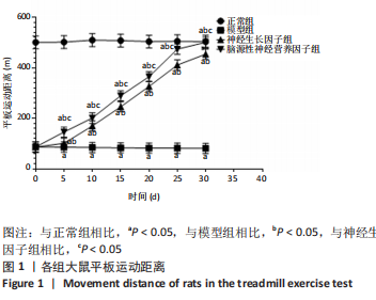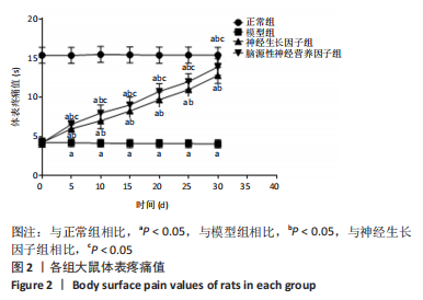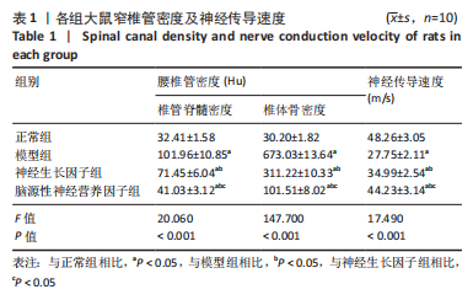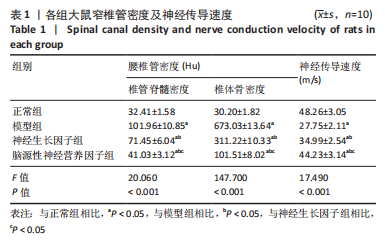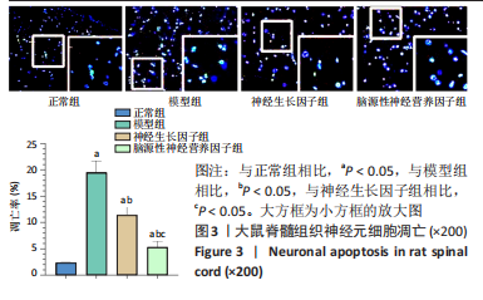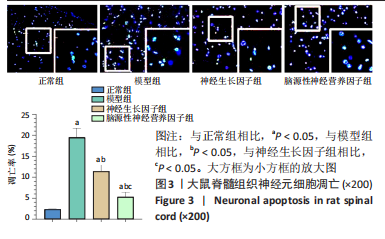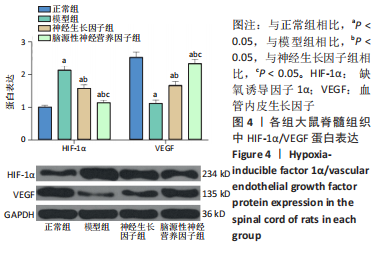[1] AYOUB S, RAJAMOHAN AG, ACHARYA J, et al. Chronic tophaceous gout causing lumbar spinal stenosis. Radiol Case Rep. 2020;16(2):237-240.
[2] 王胤斌. 加速康复外科在腰椎管狭窄症围手术期的应用研究[D]. 兰州:西北民族大学,2020.
[3] 李晓杰, 李新辉, 袁利和,等. 神经电生理刺激对脑卒中患者脊髓运动神经元的影响[J]. 现代生物医学进展,2020,20(8):1493-1496, 1505.
[4] ARABMOTLAGH M, SELLEI RM, VINAS-RIOS JM, et al. Klassifikation und Diagnostik der lumbalen Spinalkanalstenose [Classification and diagnosis of lumbar spinal stenosis]. Orthopade. 2019;48(10):816-823.
[5] 乔若飞, 李俊杰, 梁舒涵,等. 补阳还五汤对SD大鼠脊髓损伤后HIF-1α、VEGF表达的影响[J]. 中医药导报,2018,24(14):30-34.
[6] 王卓,陈俊,郝杰,等. DFO通过HIF-1α/VEGF信号通路促进脊髓损伤修复[J].西部医学,2021,33(8):1111-1114,1120.
[7] 姚欣怡, 王玉玲, 郭彦谷,等. BDNF在脊髓损伤修复中的双重作用及其表观遗传调节因素[J]. 神经解剖学杂志,2018,34(6):113-116.
[8] 李莉娟,赵宪文,禹香菊.血清BDNF、NSE表达水平与带状疱疹后神经疼痛的相关性研究[J].皮肤性病诊疗学杂志,2020,27(6):414-417,422.
[9] 师钰琪,吴红艳,朱春燕,等.从BDNF/TrkB信号通路探讨乌头汤对神经病理性疼痛模型小鼠脑神经元的保护作用[J].中国实验方剂学杂志,2020,26(7):23-30.
[10] 代凤雷,刘艺,李钦亮,等.大鼠腰椎管狭窄模型的制作及三维有限元分析[J].中国组织工程研究,2012,16(39):7312-7316.
[11] ANDALORO A. Lumbar spinal stenosis. JAAPA. 2019;32(8):49-50.
[12] LI Q, LIU Y, CHU Z, et al. Brain-derived neurotrophic factor expression in dorsal root ganglia of a lumbar spinal stenosis model in rats. Mol Med Rep. 2013;8(6):1836-1844.
[13] Eftimiadi G, Soligo M, Manni L, et al. Topical delivery of nerve growth factor for treatment of ocular and brain disorders. Neural Regen Res. 2021;16(9):1740-1750.
[14] 石勇,霞晓燕.NGF过表达质粒修饰BMSCs移植促进大鼠急性脊髓损伤修复[J].实用骨科杂志,2020,26(8):707-711,715.
[15] Chen X, Xiao JW, Cao P, et al. Brain-derived neurotrophic factor protects against acrylamide-induced neuronal and synaptic injury via the TrkB-MAPK-Erk1/2 pathway. Neural Regen Res. 2021;16(1):150-157.
[16] KHOSHDEL Z, AHMADPOUR JIRANDEH S, TAKHSHID MA, et al. The BDNF Protein and its Cognate mRNAs in the Rat Spinal Cord during Amylin-induced Reversal of Morphine Tolerance. Neuroscience. 2019; 422:54-64.
[17] 黄念念. 脊髓BDNF-mTOR通路在啮齿类动物慢性束缚应激诱导痛觉过敏中的作用[D].武汉:华中科技大学,2020.
[18] XU X, FU S, SHI X, et al. Microglial BDNF, PI3K, and p-ERK in the Spinal Cord Are Suppressed by Pulsed Radiofrequency on Dorsal Root Ganglion to Ease SNI-Induced Neuropathic Pain in Rats. Pain Res Manag. 2019;2019:5948686.
[19] 潘肃,齐治平,郑爽,等.聚乳酸-羟基乙酸共聚物/氧化石墨烯纳米纺丝膜搭载脑源性神经营养因子对脊髓损伤的修复作用[J].中华创伤杂志,2019,35(7):597-604.
[20] 李芒来. 神经电生理监测技术在老年腰椎管狭窄症手术中应用的研究分析[D].呼和浩特:内蒙古医科大学,2020.
[21] 吴建军,梁珪清,郑昌坤.黄连素对脊髓损伤大鼠染色病理、骨形态发生蛋白表达及神经元活性的影响[J].中国中医骨伤科杂志, 2021,29(2):5-9,14.
[22] 殷睿安,王双燕,王培,等.重复经颅磁刺激叠加运动训练对脊髓损伤大鼠运动功能和神经元可塑性的影响[J].中国康复医学杂志, 2021,36(7):774-778,792.
[23] KIM JW, AN HJ, YEO H, et al. Activation of Hypoxia-Inducible Factor-1α Signaling Pathway Has the Protective Effect of Intervertebral Disc Degeneration. Int J Mol Sci. 2021;22(21):11355.
[24] ZHANG G, ZHA J, LIU J, et al. WITHDRAWN: Minocycline an antimicrobial agent attenuates the mitochondrial dependent cell death and stabilizes the expression of HIF-1α in spinal cord injury. Microb Pathog. 2018;9(18):30284-30285.
[25] 张鸿升,魏卫兵,周宾宾.电针干预脊髓损伤大鼠受损节段缺氧诱导因子1α、血管内皮生长因子的表达[J].中国组织工程研究, 2020,24(11):1701-1707.
[26] 王涛.高压氧干预对大鼠脊髓继发性损伤中HIF-1α及VEGF表达的影响[J].现代中西医结合杂志,2015,24(22):2403-2405.
|
